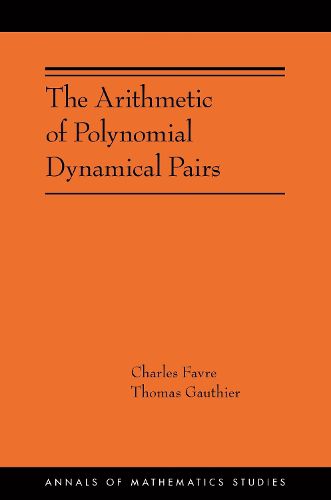Readings Newsletter
Become a Readings Member to make your shopping experience even easier.
Sign in or sign up for free!
You’re not far away from qualifying for FREE standard shipping within Australia
You’ve qualified for FREE standard shipping within Australia
The cart is loading…






New mathematical research in arithmetic dynamics
In The Arithmetic of Polynomial Dynamical Pairs, Charles Favre and Thomas Gauthier present new mathematical research in the field of arithmetic dynamics. Specifically, the authors study one-dimensional algebraic families of pairs given by a polynomial with a marked point. Combining tools from arithmetic geometry and holomorphic dynamics, they prove an unlikely intersection statement for such pairs, thereby demonstrating strong rigidity features for them. They further describe one-dimensional families in the moduli space of polynomials containing infinitely many postcritically finite parameters, proving the dynamical Andre-Oort conjecture for curves in this context, originally stated by Baker and DeMarco.
This is a reader-friendly invitation to a new and exciting research area that brings together sophisticated tools from many branches of mathematics.
$9.00 standard shipping within Australia
FREE standard shipping within Australia for orders over $100.00
Express & International shipping calculated at checkout
New mathematical research in arithmetic dynamics
In The Arithmetic of Polynomial Dynamical Pairs, Charles Favre and Thomas Gauthier present new mathematical research in the field of arithmetic dynamics. Specifically, the authors study one-dimensional algebraic families of pairs given by a polynomial with a marked point. Combining tools from arithmetic geometry and holomorphic dynamics, they prove an unlikely intersection statement for such pairs, thereby demonstrating strong rigidity features for them. They further describe one-dimensional families in the moduli space of polynomials containing infinitely many postcritically finite parameters, proving the dynamical Andre-Oort conjecture for curves in this context, originally stated by Baker and DeMarco.
This is a reader-friendly invitation to a new and exciting research area that brings together sophisticated tools from many branches of mathematics.